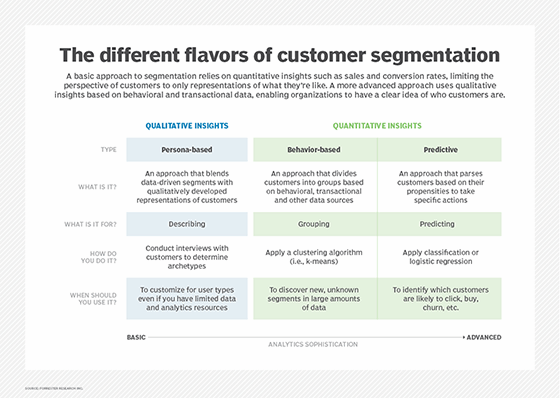
adam121 - Fotolia
Benefits and best approaches to B2B customer segmentation
With the increasing focus on personalization in B2B marketing, customer segmentation is a more important strategy than ever for organizations that want to know customers better.
Personalization is the marketing strategy du jour. Today's customers expect increasingly customized experiences that many marketers struggle to deliver with limited budgets and resources.
Customer segmentation -- grouping customers with similar characteristics to target marketing campaigns more precisely and effectively -- is a good way to achieve both. Using this strategy, organizations approach marketing with the understanding that every customer is different without feeling the pressure to create a personalized customer journey for each customer.
This not only benefits the customer -- improving customer loyalty and customer service, while not bombarding them with marketing emails -- but it also helps companies better allocate marketing resources, drive more sales and stay ahead of competition.
Choosing segments for B2B
Classic segmentation groups customers by a wide variety of factors, including age; gender; family size; income; education level; where they live and work; lifestyle; personality; and spending, consumption and product usage patterns.
B2B customer segmentation looks a little bit different. In B2B organizations, marketers focus on job title, industry verticals, whether the business is public or private, how large the company is and what its buying patterns are.
Effective B2B segmentation requires that organizations consider both vertical segmentation and horizontal. Vertical segmentation -- looking at industries or job titles -- helps businesses tailor products and services to specific industries, which will likely increase both adoption and satisfaction. The problem with the approach is that businesses cannot have a specific product for every vertical that exists.
Horizontal segmentation -- which requires looking at job titles regardless of industry -- enables organizations to focus more on the needs of people working in specific roles.

Customer retention
Segmentation can also help improve customer loyalty. In general, customers who feel that businesses are catering to their specific needs are more likely to have a satisfying experience and continue shopping with the brand. But this strategy can also be more intentional.
Businesses can use B2B customer segmentation to determine which customers are both up for renewal and have had a customer service problem with the company in the last 12 months and then target these customers specifically since they are most likely to leave.
Using customer segmentation, organizations can design a program to retain these customers, at the same time acknowledging the problems they experienced while doing business with the company. This is particularly important for subscription- and recurring revenue-based businesses.
Marketing automation software
Once an organization collects customer data and analyzes it to determine customer segments, it needs to communicate those findings to various relevant stakeholders throughout the business and use it to create new customer journeys. The more segments an organization creates, the more difficult this process becomes.
Marketing automation software is a great companion to a customer segmentation strategy because it helps organizations identify new customer segments and organize and execute marketing campaigns.
Segmentation for the sake of segmentation
Ultimately, segmentation should determine which segments provide the most value.
Customer segmentation can help organizations learn to better allocate their marketing dollars, not only by creating more personalized campaigns that will lead to more upselling and cross-selling opportunities, but also by identifying which segments are worth spending more on. Businesses can analyze the revenue derived from and cost effects of each segment to determine which customers are most valuable.
Organizations should not perform customer segmentation for the sake of customer segmentation. Before embarking on a customer segmentation project, key players should determine business initiatives. What is the goal? To gain customers? To increase revenue? Something else?
Then, everyone needs to agree on some key performance indicators to measure to determine how successful -- or, ideally, how profitable -- the customer segmentation initiative was in the first place. It is important to be able to justify marketing spending.








